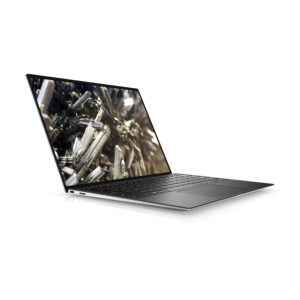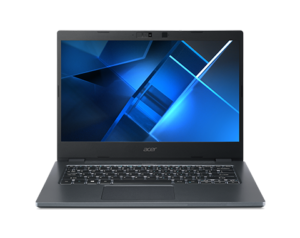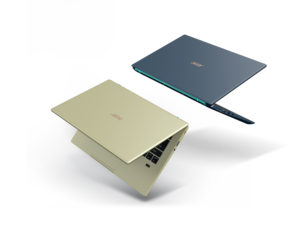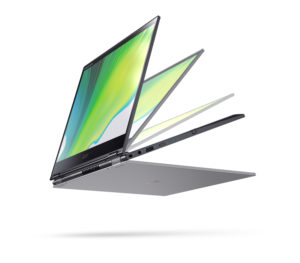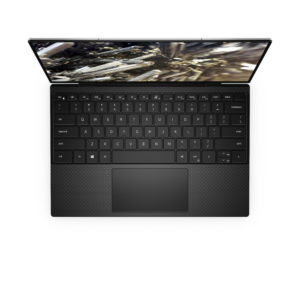Article

Intel’s GPU strategy is rooted in Xe, a single architecture that can scale from teraflops to petaflops. At Architecture Day in August 2020, Intel Chief Architect Raja Koduri, Intel fellows and architects provided details on the progress Intel is making. (Credit: Intel Corporation)
Intel’s Xe Graphics Might Mean You No Longer Need a Separate Graphics Card to Play Games | Gizmodo Australia
Intel Xe Graphics: Release Date, Specs, Everything We Know | Tom’s Hardware
From the horse’s mouth
Intel
Intel Delivers Advances Across 6 Pillars of Technology, Powering Our Leadership Product Roadmap (Press Release)
My Comments
When one thinks of Intel’s graphics processor technology, they often think of the integrated graphics processors that use system RAM memory to “paint” the images you see on the screen. Typically these graphics processors are not considered as great as dedicated graphics processors of the like NVIDIA or AMD offer which use their own display memory.
Such processors are often associated with everyday business and personal computing needs like Web browsing, office productivity applications or consuming video content. They could be useful for basic photo editing or playing casual or “retro” games that aren’t graphically demanding, but wouldn’t do well with high-demand tasks like advanced photo/video editing or today’s video-game blockbusters.
Integrated graphics technology is typically preferred for use within laptops, tablets and 2-in-1s as an everyday graphics option for tasks like word-processing, Web surfing, basic video playback and the like. This is especially because these computers need to run in a power-efficient and thermal-efficient manner, due to them being designed for portability and to be run on battery power. Let’s not forget that laptops with discrete graphics also implement integrated graphics for use as a power-efficient “lean-burn” option.
This same graphics technology also appeals to low-profile desktop computers including some “all-in-ones” and “next unit of computing” systems due to the chipsets yielding less heat and allowing for the compact design.
But typically most regular computers running desktop operating systems are nowadays specified with at least 8Gb of system RAM memory, if not 16Gb. Here, it may be inconsequential about the amount of memory used by the integrated graphics for some graphics tasks using the computer’s own screen. Let’s not forget that the Full HD (1080p) screen resolution is often recommended for a laptop’s integrated screen due to it being a power-efficient specification.
Intel has defined its new Xe graphics infrastructure platform that will be part of the Tiger Lake computing platform to be more capable than this. These GPU chips will maintain the same physical die size as prior Intel integrated graphics chips so as to avoid the need to reengineer computer designs when a silicon refresh to Tiger Lake is needed.
The more powerful Intel Xe variants will be offered with more powerful Tiger Lake CPUs. It will be similar to the current-issue Intel Iris Plus integrated graphics processors, and will be pitched for content creators. But I would say that these will simply appear in products similar to the former “multimedia laptops” that have increased multimedia performance.
One of the design goals for the Intel Xe LP (low power / low performance) integrated GPUs, especially the higher-performance variants is to play a graphically-rich AAA action game at Full HD resolution with a good frame rate. Being able to play such a game at Full HD that way would cater towards the preference for Full HD displays within 13”-15” laptops and similar portable computers due to this display specification being more power efficient than 4K UHD displays for that screen-size range.
A question I would raise is whether the frame rate would approach the standard of 60 Hz or how much of a power load this places on the computer’s batteries. As well, one would also need to know how much of the game’s “eye-candy” is being enabled during play on an Intel Xe LP integrated graphics setup.
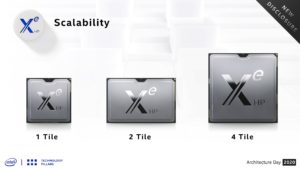
Xe-HP is the industry’s first multitiled, highly scalable, high-performance architecture, providing data center-class, rack-level media performance, GPU scalability and AI optimization. It covers a dynamic range of compute from one tile to two and four tiles, functioning like a multicore GPU. At Architecture Day in August 2020, Intel Chief Architect Raja Koduri, Intel fellows and architects provided details on the progress Intel is making. (Credit: Intel Corporation)
Intel will also intend to offer a dedicated graphics processor in the form of the Xe HP chipset codenamed DG1. It will be their first dedicated GPU that Intel has offered since 1998-2000 with a graphics card that they partnered for use with Pentium III and Celeron CPUs. This GPU will be capable of doing ray-tracing amongst other high-end gaming activities and it could be interesting to see how this chipset stands up to AMD or NVIDIA performance gaming GPUs.
The Intel Xe HP graphics platform will primarily be pitched at data center and server applications. But Intel is intending to offer a “client-computing” variant of this high-performance graphics platform as the Xe HPG. Here, this will be pitched at enthusiasts and gamers who value performance. But I am not sure what form factors this will appear in, be it a mobile dedicated GPU for performance-focused laptops and “all-in-ones” or small external graphics modules, or as a desktop expansion card for that gaming rig or “card-cage” external graphics module.
But Intel would need to offer this GPU not just as a “contract install” unit for computer builders to supply on a line-fit basis, but offer it through the “build-it-yourself” / computer-aftermarket sectors that serve hobbyist “gaming-rig” builders and the external graphics module sector. This sector is where NVIDIA and AMD are dominating within.
The accompanying software will implement adaptive graphics optimisation approaches including “there-and-then” performance tuning in order to cater towards new high-performance software needs. This would be seen as avoiding the need to update graphics driver software to run the latest games.
It could be seen as an attempt by Intel to cover the spread between entry-level graphics performance and mid-tier graphics performance. This could be a chance for Intel to make a mark for themselves when it comes to all-Intel computers pitched for everyday or modest computing expectations.
I also see Intel’s Xe graphics processor products as a way for them to be a significant third force when it comes to higher-performance “client computer” graphics processing technology. This is with NVIDA and AMD working on newer graphics silicon platforms and could definitely “liven up” the market there.
But it could lead to one or two of these companies placing a lot of effort on the high-end graphics technology space including offering such technology to the aftermarket. This is while one or two maintain an effort towards supplying entry-level and mid-tier graphics solutions primarily as original-equipment specification or modest aftermarket options.


